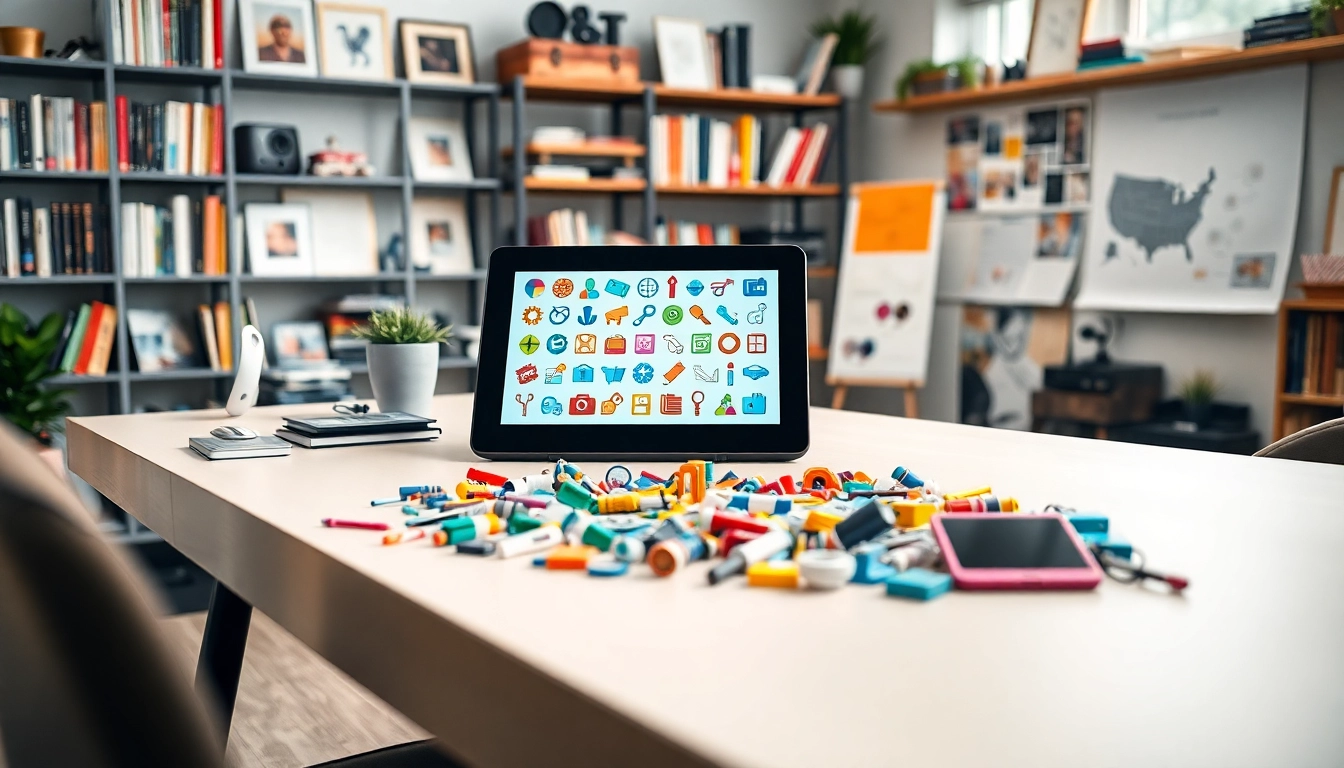Understanding Icons: The Visual Language of Design
Icons are more than just decorative elements; they act as a universal visual language that conveys meaning, esoteric information, and functional cues succinctly. As our digital environment evolves, the role of icons has expanded significantly, turning them into essential tools for designers, developers, marketing experts, and end-users alike. Icons not only enhance the aesthetic appeal of any project but also improve usability and communication. For anyone looking to delve deeper into the significance of icons, this exploration is crucial.
What are Icons and Their Importance?
Icons can be defined as simplified representations of objects, actions, or concepts. They often use minimal design to ensure immediate comprehension. In modern design, their importance cannot be overstated:
- Clarity: Icons provide clear guidance and intuitive navigation; users can decipher their meaning at a glance.
- Efficiency: They condense complex information into digestible chunks, making it easier for users to absorb content.
- Visual Appeal: Well-designed icons can enhance the overall aesthetics of websites and applications, making them more engaging.
- Brand Identity: Customized icons can embody brand elements, fostering recognition and differentiation in the marketplace.
Different Types of Icons in Modern Design
Icons can be categorized into several types, each serving distinct purposes:
- Action Icons: Represent actions like delete, save, or search, facilitating user tasks.
- Social Media Icons: Allow users to connect with social platforms seamlessly, making sharing easy.
- Navigation Icons: Help in browsing and navigating interfaces, guiding users through content.
- Informational Icons: Convey important information or alerts, such as notifications or warnings.
Historical Evolution of Icons Across Cultures
The concept of icons is not a modern invention. Historical landmarks and cultural artifacts showcase the use of symbols to communicate ideas. For instance:
- Hieroglyphics: Ancient Egyptian writing utilized pictures as symbols, which influenced contemporary design.
- Pictograms: Used globally in traffic signs, these images convey essential information without reliance on languages.
- Digital Age: The rise of personal computing and mobile devices transformed icons into vital components of interface design.
Choosing the Right Icons for Your Projects
Selecting appropriate icons for your project can significantly impact user experience. Here are several factors to consider:
Factors to Consider When Selecting Icons
When it comes to choosing icons, the following guidelines can help:
- Consistency: Ensure that icons maintain a uniform style and color scheme that matches the overall design language.
- Relevance: Icons should be meaningful within context; a weather icon should depict its purpose clearly.
- Scalability: Icons need to be legible across various screen sizes; vector formats like SVG are highly recommended.
How Icons Enhance User Experience
Icons play a pivotal role in enhancing user experience (UX). They facilitate faster navigation and user engagement:
- Visual Hierarchy: Strategically used icons can direct users’ attention toward important actions.
- Reduced Cognitive Load: By using icons, designers can convey messages quickly, thus lowering the cognitive burden on users.
- Emotional Connection: Icons can evoke feelings and emotions, helping to create a connection between the user and the product.
Trends in Iconography: What’s in Style?
Staying updated with trends in icon design can significantly elevate your projects. Here are some current movements:
- Open and Flat Design: This minimalistic approach emphasizes simple forms devoid of embellishments.
- Animated Icons: Providing dynamic elements enhances interaction and guides user behavior.
- Custom Icon Sets: Tailoring icons to fit brand narratives fosters a unique identity.
Creating Custom Icons for Your Brand
Custom icons allow brands to stand out in a crowded marketplace. Here’s how to develop your unique set:
Tools and Software for Designing Icons
Several tools can aid in the creation of custom icons:
- Vector Graphics Editors: Software like Adobe Illustrator and Affinity Designer are leading choices for designing icons.
- Online Icon Generators: Platforms like Iconfinder and Noun Project offer tools to create or customize icons easily.
- Sketch and Figma: These tools are popular for UI/UX design, making it easy to create and collaborate on icons.
Best Practices for Icon Design and Development
Maintaining effective practices can streamline the icon design process:
- Focus on Scalability: Design icons in vector format to ensure scalability across various devices.
- Simplicity: Aim for clarity over complexity; a great icon communicates its meaning at first glance.
- Test Usability: Conduct user testing to gather feedback on the clarity and effectiveness of your icons.
From Concept to Creation: Steps to a Custom Icon
Redefining your brand’s identity through icons involves several crucial steps:
- Research: Look into competitors and current trends to gather inspiration.
- Brainstorm: Sketch various concepts and visualizations based on your brand’s message.
- Refine: Choose the best concepts and refine them into polished designs.
- Implement: Integrate the icons into your project, ensuring consistency and aesthetic appeal.
Icon Accessibility and Optimization
Creating icons isn’t just about aesthetics; it’s critical also to consider accessibility.
The Importance of Accessibility in Icon Design
Designing accessible icons ensures that all users can benefit from your content:
- Inclusivity: Icons should be easily recognizable and meaningful to all users, including those with disabilities.
- Consistency: Maintaining recognizable iconography across applications can minimize confusion and enhance comprehension.
- Use of Alt Texts: Providing descriptive text tags or alternative text (alt text) supports users relying on screen readers.
Optimization Techniques for Web and Mobile Icons
Optimizing icons for the web and mobile enhances performance:
- File Formats: Use SVGs for vector icons due to their scalability and low file size.
- Responsive Design: Icons should be designed to adapt to different screen sizes dynamically.
- Performance Measurement: Utilize tools like Google PageSpeed Insights to measure load time and optimize accordingly.
Common Mistakes to Avoid in Icon Accessibility
To enhance the effectiveness of your icons, avoid these frequent pitfalls:
- Overcomplicating Designs: Highly intricate icons can obstruct clarity and usability.
- Lack of Testing: Neglecting user feedback can result in icons that don’t serve their intended purpose.
- Ignoring Context: Icons should always be coupled with context or labels for clarity, especially in complex applications.
Showcasing Icon Sets: A Market Analysis
Evaluating different icon libraries can guide you in choosing the best resources available.
Evaluating Top Icon Libraries and Resources
Understanding where to find the best icons is essential:
- Flaticon: Known for its vast collection and free resources available for both personal and commercial use.
- Icons8: Offers a wide range of customizable icons based on size and color preferences.
- Noun Project: Provides a diverse library emphasizing user-generated content and creativity.
Comparing Free vs. Premium Icon Packs
When selecting icons, consider the benefits and drawbacks:
- Free Icon Packs: Great for initial stages; however, they may lack originality and uniqueness.
- Premium Icon Packs: Often ensure high quality and customization, but come with a cost. They typically provide distinctiveness and comprehensive user rights.
How to Effectively Use Icons in Marketing Materials
In marketing, the strategic use of icons can amplify message delivery:
- Product Launches: Utilize icons to represent significant features or benefits simply and quickly.
- Email Campaigns: Use icons to break text monotony and guide readers toward calls to action.
- Social Media: Complement posts with relevant icons to enhance engagement and boost visibility.



